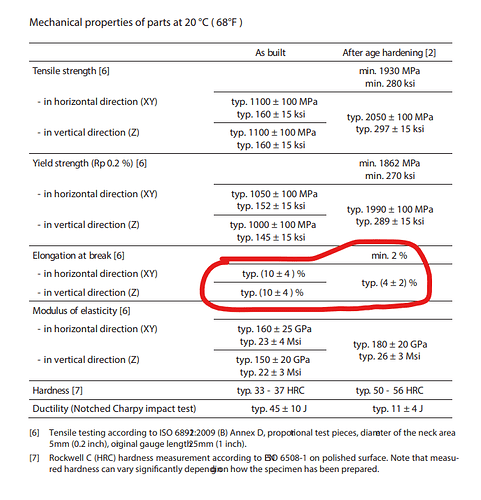Re: printing materials
When I look at the MS1 Datasheet, the yield strength looks amazing (2000mPa after heat treat!) but the elongation at break is interesting
MSDS-MaragingSteel_MS1.pdf (116.4 KB)
10% elongation before heat treatment, and only 2% after??? Usually, parts get more ductile after their heat treatment or “age hardening” (Ageing temperature 490 °C (914 °F), 6 hours, air cooling). That tells me there is some interaction with the grain structure of that steel and laser sintering process that I don’t fully understand.
In the 3D printing world, materials that are stronger (harder to come apart) are more difficult to print (harder to join together). The printability of a material is difficult to quantify. Stronger materials often generate more heat, which causes problems with internal stress and warping.
In the plastic printing world, I have seen many examples of “high performance” resins that were outperformed by basic resins in a real-world part due to printability. It is geometry and material dependent.
I added a few suppliers that people use to the top of this thread. I’m purposefully omitting our supplier because I don’t want to open the floodgates to the internet, but I am happy to help people with personal projects: Need 3D printed pipe fitting? $1/g printed Monthly
